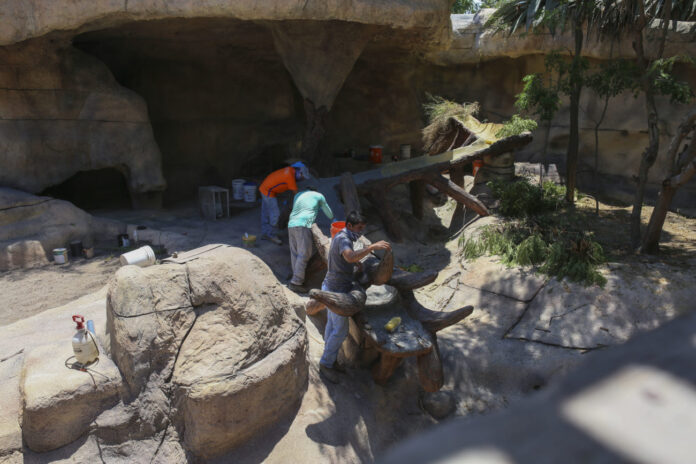
BROWNSVILLE — The Valley’s beloved Gladys Porter Zoo has weathered the COVID-19 pandemic with minimal staff and far less funding than would be normally available to provide for its collection of animals.
Gladys Porter Zoo has been around for nearly 50 years. Construction began in 1968 and was completed on Sept. 3, 1971. Its concept was novel at the time — the zoo was built specifically for endangered species that are vanishing in the wild.
The zoo’s director Patrick Burchfield explained that GPZ was also at the forefront of building a primarily bar-less, cage-less, natural habitat zoo. “It was the first one to be entirely of that concept in this country,” he said.
Today, the zoo is the largest wildlife rehabilitator in South Texas. Staff rehabilitates over 580 native animals a year. This is just one reason to keep supporting the celebrated Brownsville institution.
Pre-COVID, Burchfield said the zoo was on a “sky’s the limit trajectory” and that staff hopes to get back to that point.
Although GPZ is a nonprofit, it operates on 90 percent self-generated revenue. That means funding comes from zoo admissions, the gift shop, and restaurant concessions.
Other funds come via donations, and naturally, as the pandemic moves through its sixth month in the Rio Grande Valley, the zoo has been hit hard.
“We’re suffering greatly with this shutdown. We have a lot of animals that could potentially be subject to COVID — particularly primates like apes and monkeys, for example, would be prime candidates,” the director said.
The zoo needs operational support — things like food for the animals and funding to pay the staff that takes care of them. “Unlike some businesses, we can’t shut it off and go home, wait, and then turn it back on. We’re here 24/7 taking care of those animals,” Burchfield said.
Gladys Porter Zoo re-opened in June after closing to the public in March for the first time in its history. Currently, a limited number of guests are welcomed on Fridays from 4:00 to 7:00 p.m. Tickets must be reserved in advance at www.gpz.org.
Burchfield encouraged those who want to visit but can’t to contact the zoo and suggest other times.
“We’re trying to maximize everybody’s opportunity to enjoy the zoo,” Burchfield said. “Right now if you want to come to the zoo, we will provide you with a safe experience and a great opportunity to see all the new things that are going on.”

The zoo has added barriers to distance visitors in certain areas and has installed “lifeguards” — hired through the #GetShiftDone initiative — across the zoo grounds to make sure there’s no interchange of things like food between visitors and animals.
Everybody is required to wear masks and practice social distancing.
For those who haven’t been in a while, coming on Aug. 28 is the Otterbahn Exhibit, which will feature North American River Otters and waterfall slides for them to play on. Outside the exhibit, casts of Montezuma Cypress trees hold up the exhibit’s glass panels.
The exhibit willl celebrate the native wildlife and biodiversity of the Valley. “If we go back 100 years or even 80 years, the Rio Grande had plenty of otters and beaver,” he said.
Those who wish to donate to the zoo can do so by making a donation to GPZ’s GoFundMe campaign at https://charity.gofundme.com/o/en/campaign/gpz-emergency-fund/valleyzoologicalsoci.
Other ways you can support GPZ are to adopt an animal, purchase a membership, buy a tile, visit GPZ’s Amazon Wishlist, or mail a donation. More information is available on the Gladys Porter Zoo’s website or by calling (956) 546-7187.




